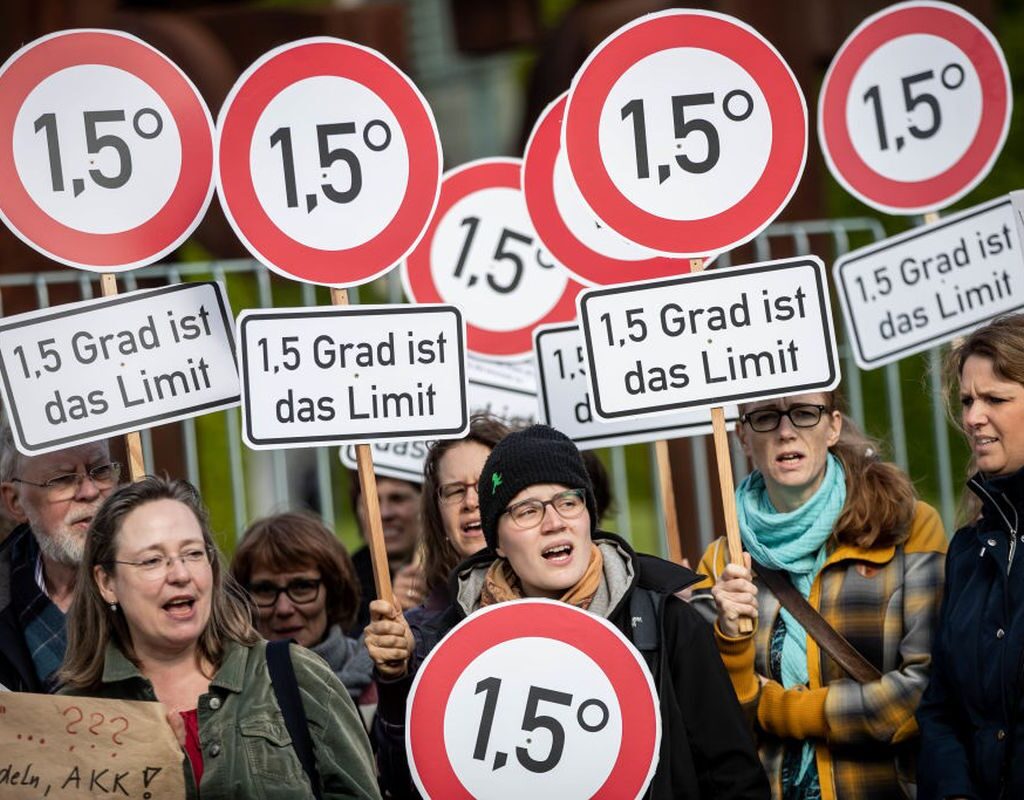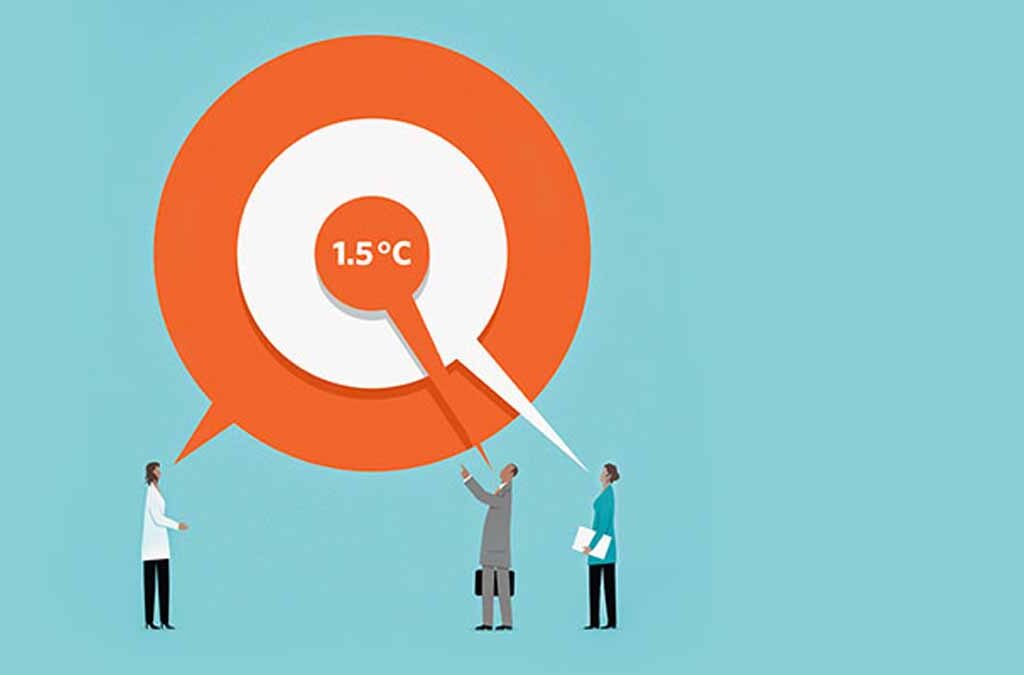
One figure in the lexicon of global climate action has emerged as particularly salient: 1.5°C. But why has this number become the linchpin in climate discussions, and why is it so pivotal? To understand its significance, we must navigate the labyrinth of data, impacts, and challenges shaping its narrative.
1.5°C signifies the proposed upper limit on global temperature rise since the dawn of the industrial era, outlined in the Paris Agreement. While seemingly minuscule on a thermometer, this increment harbours profound ramifications for our planet. It’s a threshold beyond which the repercussions of global warming transition from severe to catastrophic.
1.5 degrees Celsius, and the rise impacts the planet, biodiversity, ecosystem and global economy. Let us understand how the increase in global temperature impacts each of the above parameters.
Impact on Ecosystems and Biodiversity
Biodiversity is the variety of all life on Earth, including animals, plants and microorganisms. Many impacts of climate change – including drought, bushfires, storms, ocean acidification, sea level rise and global warming – affect biodiversity. Some of the impacts are as follows:
- Coral Reefs: Corals, often referred to as the ‘rainforests of the sea’, are sentinel species, reflecting the health of our oceans. Current data reveals that with a two °C rise, over 99% of these vibrant ecosystems would be annihilated. The Great Barrier Reef, for instance, has already experienced mass bleaching events, endangering countless marine species that call it home.
- Arctic and Antarctic Ecosystems: The poles are heating faster than the global average. A stark example is the Arctic, where summer ice could disappear entirely with a two °C increase. This jeopardizes polar bears, seals, and entire marine ecosystems, upsetting the global climate system’s balance. Additionally, Antarctica’s melting glaciers could release vast freshwater, disrupting ocean currents and marine life.
- Forests and Terrestrial Habitats: The Amazon rainforest, Earth’s most significant terrestrial carbon sink, risks transitioning into a savannah under a two °C scenario, with implications for millions of species. Alpine habitats, too, face an uphill battle, with many species facing habitat loss and extinction due to temperature changes.
Impact on Sea Levels
Sea levels are inexorably linked to temperature. The stark reality is that the difference in sea level rise between the 1.5°C and 2°C scenarios could be around 10 cm by 2100.
- Coastal Erosion: Low-lying areas like Bangladesh or the Maldives confront existential threats. For instance, the Maldivian government has relocated residents from its lowest-lying islands.
- Loss of Habitats: Mangroves, coastal buffers and breeding grounds for myriad species face existential threats due to saltwater intrusion and changing tidal patterns.

Impact on Weather Patterns
Every fraction of temperature increase exacerbates weather anomalies.
- Heatwaves: Europe’s 2003 heatwave, which led to over 30,000 deaths, could become the new norm under a two °C scenario.
- Droughts and Deserts: Areas like California have already experienced debilitating droughts, which could intensify and expand to other regions.
- Floods and Precipitation: Southeast Asian countries like Thailand and India have recently faced unprecedented flooding. In frequency and intensity, such calamities are expected to escalate with every temperature uptick.
Human Consequences
The temperature rise could result in a higher incidence of heat-related illnesses and diseases, including respiratory illnesses due to air pollution. The impacts of climate change on health will be felt globally, but it will disproportionately affect vulnerable communities.
- Health: A 2°C rise could expose over 350 million additional people to deadly heat stress by 2050. Vector-borne diseases like malaria and dengue could also find new territories.
- Food and Water: For farmers in sub-Saharan Africa, a two-degree Celsius increase could decimate crop yields by up to 40%. Simultaneously, melting Himalayan glaciers, the freshwater source for billions in Asia, threaten to first flood and then dry significant rivers.
Economic Impact
In an Oxford Economics study of a high-emission scenario, a temperature rise of 2 degrees by the year 2050 would reduce global GDP by 2.5–7.5%. By the year 2100, in this case, the temperature would rise by 4 degrees, which could reduce the global GDP by 30% in the worst case. The costs of inaction are colossal.
- Infrastructure: With a two-degree Celsius increase, damages to coastal infrastructure alone could exceed $1 trillion annually by the 2060s.
- Agriculture: Reduced crop yields could lead to price surges, with potential annual global economic losses of over $220 billion by 2100.
- Migration and Conflicts: Rising temperatures could displace up to 140 million people by 2050, triggering potential geopolitical conflicts.
Challenges in Managing 1.5-degree Target
The pressing urgency to limit global warming to 1.5°C is apparent, but the journey to achieving this target is fraught with multifaceted challenges. Let’s decode these challenges comprehensively:
- Current Emission Trends and Trajectories:
As of the last assessments, we are on a trajectory that could lead to a temperature surge of over 3°C by 2100. To provide perspective, global carbon emissions reached a staggering 33.1 gigatonnes in 2019. Even with pandemic-induced reductions, a rebounding 4.8% increase in emissions was observed in late 2020. The world’s largest emitters, including the U.S., China, and India, are integral to this discourse. For instance, China commissions coal-fired power plants despite its ambitious renewable goals. Similarly, the U.S.’s withdrawal (and subsequent rejoining) of the Paris Agreement under different administrations showcases policy volatility.
- Economic Dependencies on Fossil Fuels
Many nations, especially those rich in oil and coal reserves like Saudi Arabia or Australia, have economies deeply intertwined with fossil fuels, making political and economic transitions challenging. Though diminished in the U.S., the coal industry still provides livelihoods for thousands. Transitioning away from coal without ensuring alternative employment can spark socio-economic issues.
- Technological Hurdles
While carbon capture and storage (CCS) technologies are promising but still nascent, we need to capture and store about 10 billion tons of CO2 annually by 2050, a staggering upscaling from 40 million tons. The inconsistent nature of solar and wind energy requires robust storage solutions. Current battery technologies, although advancing, are yet to meet the global demand efficiently.
- Political and Socio-cultural Barriers
Climate negotiations, as seen in various COP meetings, reveal the chasm between developed and developing nations, each presenting their set of challenges and demands. In countries like Brazil, deforestation of the Amazon often stems from a conflict between environmental priorities and perceived economic advancement.
- Funding and Investment Gaps
The Green Climate Fund conceptualized to assist developing nations in climate mitigation, aimed to mobilise $100 billion annually by 2020. However, commitments and actual disbursements have lagged. Developing nations face dual challenges – adapting to existing climate change impacts while transitioning to greener alternatives. Both demand substantial investments.
- Time, the Stealthy Adversary
Even if we halt all emissions today, the effects of past emissions will persist. The Arctic, for instance, may still see ice-free summers, impacting global weather patterns. The adage, “delay is the deadliest form of denial,” resonates here. Every year of delayed action escalates the cost and complexity of future mitigation efforts.

The Path Forward
Limiting global warming to 1.5°C requires combining technology, policy, and behavioural change. Several nations are leading by example, establishing pathways that are not only innovative but also replicable. Here’s a more profound exploration:
- Accelerating the Transition to Renewable Energy
Transitioning to renewable energy is pivotal in decarbonising the global economy. Fossil fuels, historically responsible for the majority of greenhouse gas emissions, must be replaced with cleaner energy sources like wind, solar, and hydro. Saudi Arabia’s $200 billion, 200-gigawatt solar power project showcases how nations endowed with abundant sunlight can harness it effectively. The UK’s Hornsea One, the world’s largest offshore wind farm, emphasizes wind energy’s vast potential, especially for coastal countries. As seen in Bangladesh, decentralized solar projects can empower even the remotest regions, democratizing energy access while being environmentally responsible.
- Enhancing Carbon Capture Technologies
The sheer amount of CO2 in our atmosphere warrants active removal, not just emission reduction. Therefore, Advanced carbon capture technologies are crucial in striking the balance in our carbon budget. Climeworks’ plant in Switzerland highlights the potential of pulling CO2 directly from the air, a critical technology for a balanced carbon future. With initiatives like Australia’s carbon farming, agriculture’s narrative is being rewritten from a significant emitter to a potential carbon sink.
- Electrification of Transport and Infrastructure
The transportation sector stands as one of the significant contributors to global emissions. When combined with green electricity, electrifying transport can dramatically reduce this sector’s carbon footprint. Norway’s high EV adoption rate is a beacon, demonstrating the feasibility and benefits of transitioning away from fossil fuel-powered vehicles. Initiatives like Japan’s “FutureCity” underscore the importance of integrating sustainability from the infrastructure blueprint stage.
- Revamping Agricultural Practices
Agriculture is a food source and contributes a significant portion of global emissions. However, innovative agricultural practices can turn this sector into a part of the climate solution. France’s “4 per 1000” initiative showcases how agriculture can transition from being a problem to becoming an integral part of the solution. Urban solutions like vertical farming in Singapore illustrate how to produce food sustainably in land-scarce and urban settings.
- Global Cooperation and Financial Instruments
Beyond technological and behavioural change, the financial sector’s alignment towards sustainability and international collaboration remains paramount in achieving the 1.5°C goal. The global surge in green bond issuance illustrates a growing financial commitment to sustainability, merging economic interests with environmental concerns. Collaborative efforts like the Powering Past Coal Alliance indicate that international unity is not just idealistic but a tangible reality in combating climate change.
- Citizen Engagement and Behavioral Change
At the heart of all policy shifts and technological advancements lies the individual. Grassroots movements and an educated citizenry can amplify the impact of top-down measures, ensuring sustainability becomes ingrained in our collective psyche. Italy’s decision to include climate studies in curricula embodies the essence of preparing the next generation to face the challenges ahead. With its global resonance, the Fridays for Future movement is a testament to the power of collective activism in shaping policy decisions.
In Conclusion: The Imperative of 1.5°C
As we have traversed the vast landscape of the 1.5°C target, one fact remains clear: “Our planet stands on the precipice of irreversible change, and the margin between safety and catastrophe is, in global terms, a mere half-degree”. The myriad examples, from ecosystems to economics, underline the profound impact this half-degree can have on our collective future. But in these challenging projections also lies hope and opportunity. Nations worldwide are pioneering innovative strategies, harnessing technology, policy, and human resolve to redirect our trajectory towards a more sustainable and resilient world.
However, this isn’t solely a task for governments and large corporations. The urgency of the 1.5°C target summons a collective call to action. Every individual, community, and industry has a role in this global tapestry of climate action. The next decade will be critical, and while the challenges are monumental, so are the opportunities for innovation, collaboration, and global transformation. As we look forward to a future defined by today’s decisions, let us remember that preserving our planet and safeguarding future generations isn’t just an obligation—it’s a shared destiny!
Note: The images are taken from various sources, and we thank the creators and originators.


